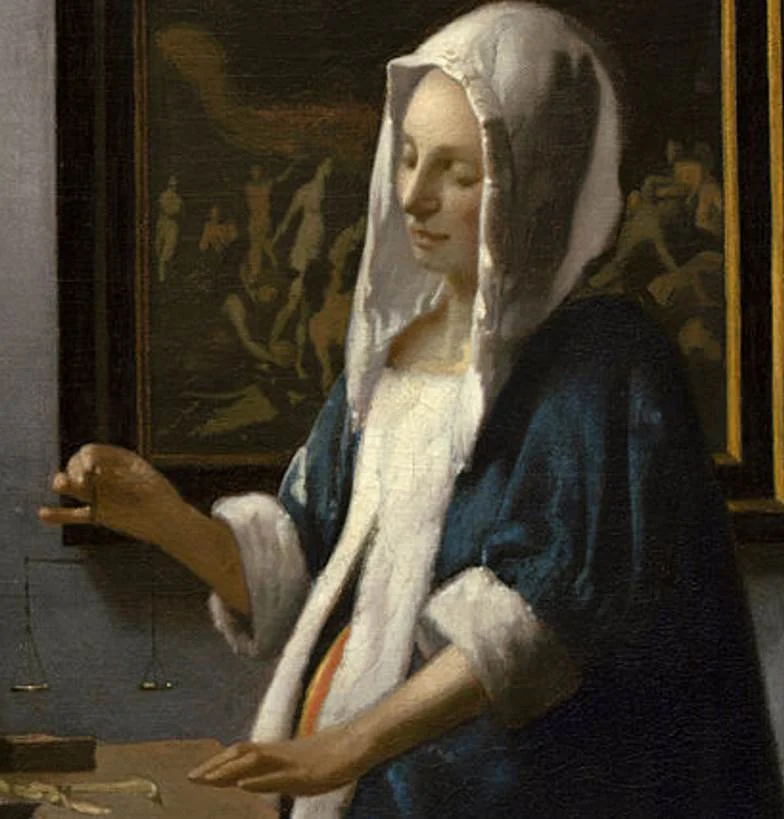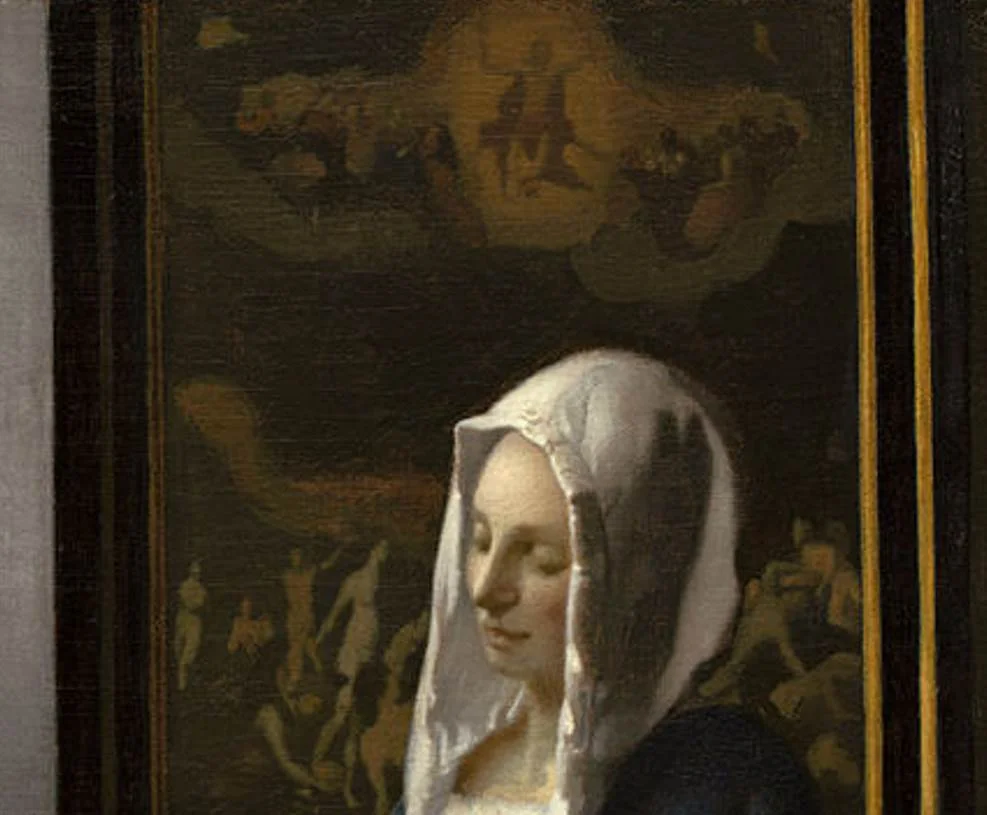Delicate works of art that depict authentic domestic scenes from the 17th century, often intertwined with mysterious symbolism. That kind of sums up the oeuvre of Dutch Golden Age painter Johannes Vermeer (1632-1675).
The painting described in this article pretty much exemplifies all of these qualities. Let’s take a closer look at some of the most interesting facts about Woman Holding a Balance by Vermeer, an incredibly valuable work of art.
1. It’s unclear when the painting was completed
Johannes Vermeer wasn’t the most prolific painter in the world as only about 35 paintings are credited to him today. The main reason why it’s not clear how many paintings he exactly created is that he only dated and signed a few of them.
This also applies to Woman Holding a Balance, a painting that is assumed to be completed anywhere between 1662 or 1664, but which is not sure.
This means that the artist was in his early 30s while he presumably completed this work. These were also the years that he was elected as head of the Guild of Saint Luke in his hometown of Delft, something that emphasizes his local celebrity status.

2. The painting originally had a different name
Even though the painting is known today as “Woman Holding a Balance,” this wasn’t always the case.
It was originally referred to as “Woman Weighing Gold,” an assumption made based on the box of jewelry that is located on the table in front of the woman.
A closer examination of the painting conducted in the 20th century revealed, however, that the balance is in fact empty. That’s was the moment that the title of the painting was changed.

3. The depicted woman appears to be pregnant
Vermeer became a Catholic shortly before he married a Catholic woman named Catharina Bolenes in 1653. Together they were extremely fruitful as the marriage produced 11 children.

The woman depicted here appears to be pregnant, something that has led art historians to assume that his wife was the model for it.
He also used one of his daughters as a model sometimes, including in two of his most famous works, “Girl with a Pearl Earring” (1665), and “The Art of Painting” (1666-1668).

4. The painting in the background might have a symbolic meaning
The true meaning of the painting remains a point of discussion among ar historians. Some agree that there is a connection between the painting in the background and the balance.
The painting depicts a scene of the “Last Judgment” in which Christ is seen with arms stretched wide. The connection between the two elements is presumably a remembrance of leading a balanced life.
Other elements are the box of jewelry, which is literally spilling over with pearls and gold, and a mirror on the wall. The box could be seen as the attraction of earthly possessions, while the mirror could represent self-knowledge.
Like most Vermeer paintings, the exact meaning of the symbols in the painting is still debated.

5. It’s on public display in a major art museum in Washington D.C.
The painting is on public display at one of the most famous art museums in the United States, the National Gallery of Art in Washington D.C. It’s part of the “Widener Collection” and is referenced as 1942.9.97.
It’s not the only artwork of Vermeer in the collection of this museum as it also features:
- “A Lady Writing” (1665)
- “Girl with a Flute” (1665-1666)
- “Girl with a Red Hat” (1665-1666)
This simply means that this is a great museum to visit in case you are a fan of the world of this remarkable Baroque artist.

More interesting facts about Woman Holding a Balance by Vermeer
6. Just like many other famous works of art by Johannes Vermeer, this is a relatively small painting. It only has dimensions of 42.5 × 38 centimeters (16.7 × 15 inches).
This also means that microscopic studies were needed to determine that the balance was in fact empty, quite amazing.
7. An initial study pigment analysis of the painting concluded that Vermeer used ultramarine, a type of dark blue, for the tablecloth. The gold curtain was determined to be Indian yellow.
What’s remarkable is that a technical analysis revealed that the painting has been extended by about 5 centimeters (1.96 inches) on each side long after the artist had completed the work.
This also means that the original 1968 analysis taken from this extension was incorrect. The yellow curtains were painted using lead-tin-yellow, an expensive pigment referred to as the “Yellow of the Old Masters” as it was frequently used by artists of the Renaissance.

8. Some art historians defined this painting as a “vanitas painting.” This means a painting that emphasizes the vanity of life and the futility of earthly things about certain death.
Vanitas paintings were pretty common in the Low Countries during the 16th and 17th centuries. Vanitas is a Latin word that means “Emptiness” to “futility.”
9. Because the jewelry box is overflowing with pearls, the painting has also been identifying as a metaphor for the “Parable of the Pearl.” This is one of the parables of Jesus which appears in Matthew 13:45–46 and which reads:
Again, the kingdom of heaven is like unto a merchant man, seeking goodly pearls: Who, when he had found one pearl of great price, went and sold all that he had, and bought it.
Pearls had a much greater value in ancient times than they do today, so this parable reflects the immense value of the Kingdom of Heaven. It’s possible that Vermeer tried to make a reference to this in this painting.

10. Even though Vermeer received a lot of credit during his lifetime, especially locally, this quickly diminished following his death in December 1675. It also left his wife completely bankrupt which meant she was forced to sell all paintings of her husband still in her possession.
Many of his paintings were eventually sold at an auction in Amsterdam in the year 1696. This included 21 works of the artist in the collection of Jacob Dissius, a man who married the daughter of his main patron, Pieter van Ruijven.
Woman Holding a Balance was sold for 155 guilders. This was among the highest prices of his work. Only “The Milkmaid” sold for more at 177 guilders.

